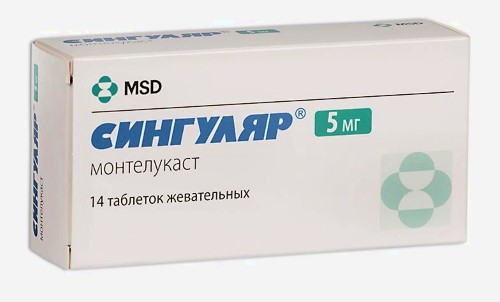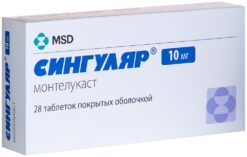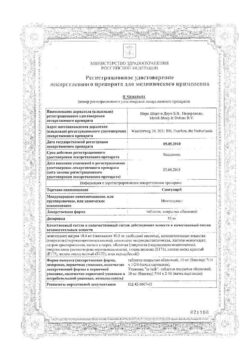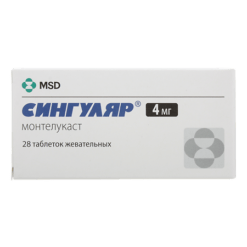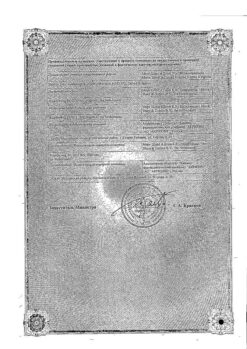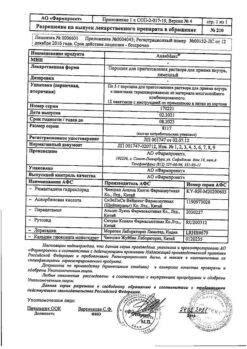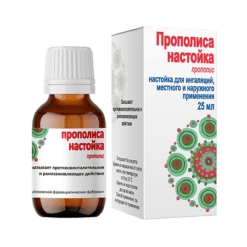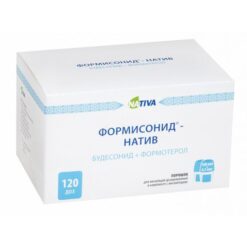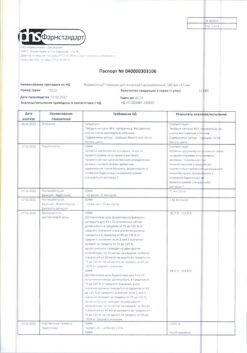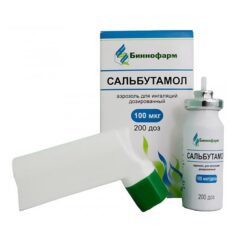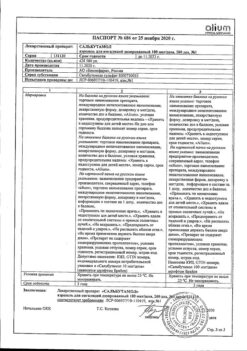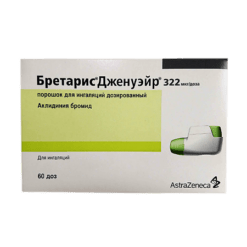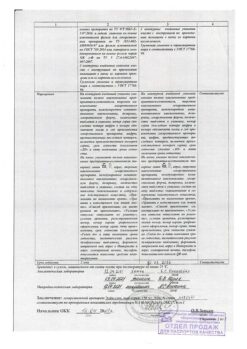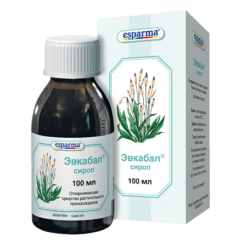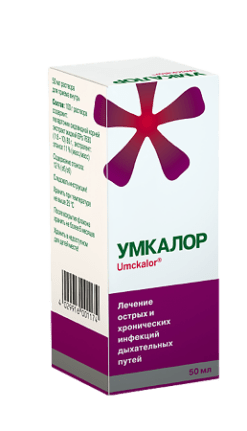No products in the cart.
Singular, 5 mg 14 pcs
€36.25 €31.41
Description
Pharmacodynamics
Montelukast inhibits cysteinyl leukotriene receptors of the airway epithelium, thus having simultaneously the ability to inhibit bronchospasm caused by inhaled cysteinyl leukotriene LTD4 in patients with bronchial asthma. A dose of 5 mg is sufficient to stop LTD4-induced bronchospasm. The use of montelukast in doses greater than 10 mg per day, taken once, does not increase the effectiveness of the drug.
Montelukast causes bronchodilation within 2 hours after oral administration; and may supplement bronchodilation induced by β2 -adrenomimetics.
Pharmacokinetics
Intake
Montelukast is rapidly and almost completely absorbed after oral administration. Normal food intake has no effect on the bioavailability and maximum plasma concentration (Cmax) of coated tablets and chewable tablets. Cmax is reached after 3 hours in adults when taking coated tablets 10 mg on an empty stomach. Bioavailability in per oral administration is 64%.
Cmax is reached in 2 hours in adults when taking chewable tablets 5 mg on an empty stomach. Bioavailability is 73%.
Distribution
Montelukast binds to plasma proteins by more than 99%. The volume of distribution of montelukast averages 8-11 liters.
Metabolism
Montelukast is actively metabolized in the liver. With therapeutic doses, plasma concentrations of montelukast metabolites are not determined in equilibrium in adults and children.
It is assumed that cytochrome P450 CYP isoenzymes (3A4 and 2C9) are involved in the metabolism of montelukast, and at therapeutic concentrations, montelukast is not inhibited by cytochrome P450 CYP isoenzymes: 3A4, 2C9, 1A2, 2A6, 2C19 and 2D6.
The clearance of montelukast in healthy adults is on average 45 ml/min. After oral administration of montelukast, 86% of it is excreted in the feces within 5 days and less than 0.2% in the urine, confirming that montelukast and its metabolites are excreted almost exclusively with the bile.
The half-life of montelukast in young healthy adults is 2.7 to 5.5 hours. The pharmacokinetics of montelukast remain almost linear when oral doses over 50 mg are taken. When taking montelukast in the morning and evening hours no differences in pharmacokinetics are observed. When taking once daily coated tablets 10 mg a moderate (about 14%) cumulation of the active substance in plasma is observed.
Particular pharmacokinetics in different groups of patients
Particular pharmacokinetics of montelukast in women and men are similar.
Elderly patients
When taken orally once daily in 10 mg film-coated tablets, pharmacokinetic profile and bioavailability are similar in elderly and younger patients.
Hepatic failure
In patients with mild to moderate hepatic failure and clinical manifestations of hepatic cirrhosis, a slowing of montelukast metabolism with an increase of approximately 41% of the area under the pharmacokinetic concentration-time curve (AUC) after a single dosing of 10 mg has been noted.
The excretion of montelukast is slightly increased in these patients compared to healthy subjects (median half-life of 7.4 hours). There is no need to change the dose of montelukast for patients with mild to moderate hepatic impairment. There are no data on the nature of the pharmacokinetics of montelukast in patients with severe hepatic impairment (more than 9 points on the Child-Pugh scale).
Race
No differences in clinically significant pharmacokinetic effects were found in patients of different races.
Renal Impairment
Because montelukast and its metabolites are not excreted in the urine, the pharmacokinetics of montelukast in patients with renal impairment have not been evaluated. There is no need to adjust the dose of the drug for this group of patients.
Indications
Indications
Prevention and long-term treatment of bronchial asthma in adults and children from 6 years of age, including prevention of daytime and nighttime symptoms of the disease, treatment of aspirin-sensitive patients with bronchial asthma and prevention of exercise-induced bronchospasm.
Relief of daytime and nighttime symptoms of seasonal allergic rhinitis (in adults and children over 6 years of age) and persistent allergic rhinitis (in adults and children over 6 years of age).
Pharmacological effect
Pharmacological effect
Pharmacodynamics
Montelukast inhibits cysteinyl leukotriene receptors of the airway epithelium, thereby simultaneously having the ability to inhibit bronchospasm caused by inhaled cysteinyl leukotriene LTD4 in patients with bronchial asthma. A dose of 5 mg is sufficient to relieve bronchospasm induced by LTD4. The use of montelukast in doses exceeding 10 mg per day, taken once, does not increase the effectiveness of the drug.
Montelukast causes bronchodilation within 2 hours after oral administration; and may complement bronchodilation caused by β2-adrenergic agonists.
Pharmacokinetics
Suction
Montelukast is rapidly and almost completely absorbed after oral administration. Eating normal food does not affect the bioavailability and maximum plasma concentration (Cmax) of film-coated tablets and chewable tablets. In adults, when taking 10 mg film-coated tablets on an empty stomach, Cmax is achieved after 3 hours. Bioavailability when taken orally is 64%.
When taking 5 mg chewable tablets on an empty stomach, Cmax in adults is achieved after 2 hours. Bioavailability is 73%.
Distribution
Montelukast is more than 99% bound to plasma proteins. The volume of distribution of montelukast averages 8-11 liters.
Metabolism
Montelukast is actively metabolized in the liver. When using therapeutic doses, the concentration of montelukast metabolites in plasma at steady state in adults and children is not determined.
It is assumed that the cytochrome P450 CYP isoenzymes (3A4 and 2C9) are involved in the metabolism of montelukast, while at therapeutic concentrations montelukast does not inhibit the cytochrome P450 CYP isoenzymes: 3A4, 2C9, 1A2, 2A6, 2C19 and 2D6.
Removal
The clearance of montelukast averages 45 ml/min in healthy adults. After oral administration of montelukast, 86% of its amount is excreted in the feces within 5 days and less than 0.2% in the urine, confirming that montelukast and its metabolites are excreted almost exclusively in bile.
The half-life of montelukast in young healthy adults ranges from 2.7 to 5.5 hours. The pharmacokinetics of montelukast remains almost linear when administered orally at doses above 50 mg. When taking montelukast in the morning and evening hours, no differences in pharmacokinetics were observed. When taking 10 mg film-coated tablets once a day, a moderate (about 14%) cumulation of the active substance in plasma is observed.
Features of pharmacokinetics in different groups of patients
Floor
The pharmacokinetics of montelukast are similar in women and men.
Elderly patients
When administered orally once daily as 10 mg film-coated tablets, the pharmacokinetic profile and bioavailability are similar in elderly and young patients.
Liver failure
In patients with mild to moderate hepatic impairment and clinical manifestations of cirrhosis, a slowdown in the metabolism of montelukast was observed, accompanied by an increase in the area under the concentration-time pharmacokinetic curve (AUC) by approximately 41% after a single dose of 10 mg.
The elimination of montelukast in these patients is slightly increased compared to healthy subjects (average half-life of 7.4 hours). No dose adjustment of montelukast is required for patients with mild to moderate hepatic impairment. There are no data on the nature of the pharmacokinetics of montelukast in patients with severe liver failure (more than 9 points on the Child-Pugh scale).
Race
There were no differences in clinically significant pharmacokinetic effects in patients of different races.
Kidney failure
Because montelukast and its metabolites are not excreted in the urine, the pharmacokinetics of montelukast in patients with renal impairment have not been evaluated. No dose adjustment is required for this group of patients.
Special instructions
Special instructions
SINGULAR tablets are not recommended for the treatment of acute attacks of bronchial asthma. In acute cases of bronchial asthma, patients should be prescribed medications to relieve and prevent asthma attacks.
The dose of inhaled glucocorticosteroids used simultaneously with SINGULAR can be gradually reduced under the supervision of a physician. SINGULAR cannot be used as a substitute for inhaled or oral glucocorticosteroids.
Reducing the systemic dose of glucocorticosteroids in patients receiving antiasthmatic drugs, including leukotriene receptor blockers, was accompanied in rare cases by the appearance of one or more of the following phenomena: eosinophilia, vascular rash, worsening of pulmonary symptoms, cardiac complications and/or neuropathy, sometimes diagnosed as Churg-Strauss syndrome – systemic eosinophilic vasculitis.
Although a causal relationship between these adverse events and leukotriene receptor antagonist therapy has not been established, caution and appropriate clinical monitoring should be used when reducing the systemic dose of glucocorticosteroids in patients taking SINGULAR.
Use in elderly patients
There were no age-related differences in the efficacy and safety profiles of SINGULAR.
Active ingredient
Active ingredient
Montelukast
Composition
Composition
1 chewable tablet contains:
Active substance:
Pregnancy
Pregnancy
SINGULAR should be used during pregnancy and lactation only if the expected benefit to the mother outweighs the potential risk to the fetus or child.
Contraindications
Contraindications
Hypersensitivity to any of the components of the drug Singulair, children under 6 years of age.
Side Effects
Side Effects
In general, SINGULAR is well tolerated. Side effects are usually mild and usually do not require discontinuation of treatment.
The overall incidence of side effects reported with SINGULAR is comparable to that for placebo:
Hypersensitivity reactions (including anaphylaxis, angioedema, rash, pruritus, urticaria and very rarely eosinophilic liver infiltrates);
Erythema nodosum, unusual vivid dreams;
Hallucinations; drowsiness;
Irritability;
Agitation, including aggressive behavior;
Fatigue;
Suicidal thoughts and suicidal behavior (suicidality);
Insomnia;
Paresthesia/hypesthesia and very rarely – seizures;
Nausea, vomiting, diarrhea, abdominal pain;
Headache;
Arthralgia;
Myalgia;
Muscle cramps;
Tendency to increased bleeding, formation of subcutaneous hemorrhages;
Heartbeat;
Edema.
Interaction
Interaction
SINGULAR can be prescribed together with other drugs traditionally used for the prevention and long-term treatment of bronchial asthma. The recommended clinical dose of montelukast did not have a clinically significant effect on the pharmacokinetics of the following drugs: theophylline, prednisone, prednisone, oral contraceptives (ethinyl estradiol/norethindrone 35/1), terfenadine, digoxin and warfarin.
AUC is reduced in individuals concomitantly receiving phenobarbital (by approximately 40%), however, no adjustment of the SINGULAR dosage regimen is required in such patients.
Treatment with bronchodilators: SINGULAR can be added to the treatment of patients whose asthma is not controlled by bronchodilators alone. When a therapeutic effect is achieved (usually after the first dose) during therapy with SINGULAR, the dose of bronchodilators can be gradually reduced.
Inhaled glucocorticosteroids: Treatment with SINGULAR provides an additional therapeutic effect to patients receiving treatment with inhaled glucocorticosteroids. Once the patient’s condition has stabilized, the dose of glucocorticosteroids may be reduced. The dose of glucocorticosteroids should be reduced gradually, under the supervision of a physician. In some patients, inhaled glucocorticosteroids may be completely discontinued. An abrupt replacement of inhaled glucocorticosteroid therapy with SINGULAR is not recommended.
Overdose
Overdose
There are no data on overdose symptoms when taking SINGULAR in patients with bronchial asthma at a dose exceeding 200 mg/day for 22 weeks and at a dose of 900 mg/day for 1 week.
There are reports of acute overdose of montelukast in children (taking at least 150 mg of the drug per day). Clinical and laboratory data indicate that the safety profile of SINGULAR in children corresponds to the safety profile in adults and elderly patients. The most common adverse events were thirst, drowsiness, mydriasis, hyperkinesis and abdominal pain.
Treatment is symptomatic.
There are no data on the possibility of removing montelukast by peritoneal dialysis or hemodialysis.
Storage conditions
Storage conditions
In a dry place, protected from light, at a temperature not exceeding 30 °C.
Shelf life
Shelf life
2 years.
Manufacturer
Manufacturer
Organon Pharma (UK) Limited, UK
Additional information
| Shelf life | 2 years. |
|---|---|
| Conditions of storage | In a dry, light-protected place at a temperature not exceeding 30 °C. |
| Manufacturer | Organon Pharma (UK) Limited, United Kingdom |
| Medication form | chewable tablets |
| Brand | Organon Pharma (UK) Limited |
Other forms…
Related products
Buy Singular, 5 mg 14 pcs with delivery to USA, UK, Europe and over 120 other countries.

